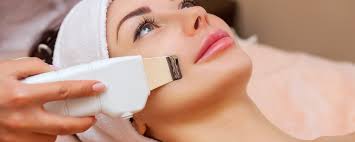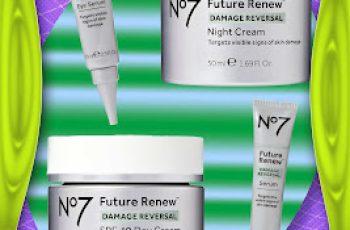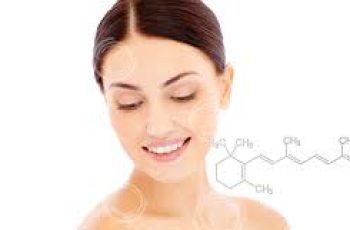
Melanin: The Skin Pigment That Causes Dark Spots and Gives Skin Color
Melanin in skin is the most important pigment that contributes to skin color. It is made from dopa and tyrosine in a process that relies on the enzyme tyrosinase. It is not a protein. Melanin is a polymer made from the amino acids but is not considered a protein.
Skin color is derived from several pigments, but melanin plays the biggest role in determining your skin color. How melanin in skin reacts to light determines which Fitzpatrick Skin Type you are and if your skin is white, light brown, brown, dark brown, or black.
Everyone has melanin in the skin unless you are an albino, but differences in melanin and how it acts can be found when comparing ethnic groups.
What is melanin and how is it made in skin?
Types of Melanin in Skin
Melanin is a skin pigment. There are two kinds of melanin, each imparts a different color to the skin:
Eumelanin – brown/black color
Pheomelanin -red/yellow color
Does Everyone Have Melanin?
Everyone has melanin so why do skin colors differ? Human skin, regardless of Fitzpatrick Skin Type, has a consistent ratio of 74% eumelanin to 26% pheomelanin.(4,5,6) Sun exposure and tanning does not change his ratio.
So everyone has melanin and the same ratio of pheomelanin to eumelanin.
The color difference in white, brown and black skin is due to the amount and size of the melanin granules found in the epidermis and dermis. (7)
How much melanin is in black skin varies. Darker skin has more melanin granules, lighter skin has less.
Melanin in Redheads
People with red hair have differences in a gene called MCIR. These differences limit the production of a type of eumelanin, leading to a preponderance of pheomelanin. Because of this MCIR gene they get:
red hair
freckles
moles
increased risk of melanoma
Redheads who stay out of the sun and wear daily sunscreen have fewer moles compared to those who are in the sun more. However, the number of freckles seems to be mostly decided by our genes, as seen in a study with twins.
Melanin function- what does it do?
Melanin protects the DNA in skin cells from damage and mutations that can be caused by light energy such as ultraviolet radiation.
Melanin is important to protect your skin from
from sun damage that occurs from UVA and UVB radiation.
Melanin production increases when skin is exposed to sun. This process is called tanning.
Skin tanning is the body’s way to protect itself and it’s DNA from the ravages of sun exposure.
Melanin benefits
It is very beneficial to have a lot of melanin in your skin. In fact, researchers are trying to develop a pill that will darken your skin and increase melanin production. It is believed that this might prevent skin cancer by giving skin more protection.
Both types of melanin protect skin but eumelanin is more protective than pheomelanin.
How Melanin Protects Skin from Sun and Light
Melanin absorbs UV radiation rather than reflecting it. Eumelanin is the primary type of melanin responsible for UV protection.
Melanin protects the skin from UV radiation through the following mechanisms:
UV absorption: Melanin has a broad absorption spectrum, covering both UVA (315-400 nm) and UVB (280-315 nm) ranges. When UV radiation penetrates the skin, melanin acts as a physical barrier by absorbing the UV photons. The absorbed energy is then dissipated as heat, preventing it from causing direct damage to the DNA and other cellular structures.
Scattering of UV radiation: In addition to absorption, melanin also scatters UV radiation. This scattering effect helps to distribute the energy of UV photons, reducing their penetration into the deeper layers of the skin. The combination of absorption and scattering by melanin makes it an effective natural sunscreen.
Antioxidant properties: Melanin has been shown to possess antioxidant properties, which help to neutralize reactive oxygen species (ROS) generated by UV exposure. By scavenging free radicals, melanin can help prevent oxidative stress and the resulting damage to skin cells, proteins, and lipids.
Distribution in the epidermis: Melanin is distributed throughout the epidermis, forming a protective cap over the nuclei of the keratinocytes. This distribution pattern helps to shield the DNA of the skin cells from direct UV damage.
The amount and type of melanin present in an individual’s skin determine their skin color and their natural level of sun protection. People with darker skin tones have more eumelanin, which provides better UV protection compared to those with lighter skin tones.
Where is melanin found in the skin?
Melanin is made by cells called melanocytes that move between the epidermis and the dermis.
This is why melanin is found in both the epidermis and dermis of the skin. More melanin is found in the epidermis than the dermis.
Melanocytes get melanin into the epidermis this way:
Make melanin
Package it in melanosomes
Transfer melanosomes into keratinocytes.
Where melanin is in the skin
How is melanin made?
Melanocytes make melanin from tyrosine. The process of making both types of melanin requires an enzyme called tyrosinase. When cysteine is present- pheomelanin is made. In the absence of cysteine, eumelanin is made.
Tyrosine and Tyrosinase
Tyrosinase turns tyrosine into L-dopa which goes down a pathway to make either eumelanin or pheomelanin.
Tyrosinase is needed to make melanin
Once melanin is made by melanocytes, it is packed into protective melanosomes and travels up the “arms” of the melanocyte until it reaches skin cells called keratinocytes. The melanosome then passes through a receptor called a protease activator receptor-2 (PAR-2) into the keratinocyte. Clumps of melanin and melanosomes can be seen in pigmented keratinocytes.
where skin pigment is made in skin
Melanin as seen under a crosspolarized Canfield Visia Camera.
melanin on the face seen in the canfield camera
Fitzpatrick Skin Type Numbers
What is the Fitzpatrick Skin Type?
The Fitzpatrick Skin Type is a measure of how your skin reacts to ultraviolet light. It is not a measure of ethnicity. It also should not be used to choose a skin care routine. It has nothing to do with what skin care ingredients your skin needs.
It is used by doctors to determine what dose of ultraviolet light or laser light to use on our skin for skin treatments- usually to treat psoriasis and vitiligo.
What Causes Skin Color?
Human skin color comes from combinations of the colors red, yellow and blue. Most of that color comes from melanin. Other pigment also play a role in skin tone. Some skin is more pink, yellow, or blueish. Why is that?
Skin tone, complexion and skin color
When people use the term “complexion”, they mean skin tone. The complexion is the surface color of the skin.
The skin tone is derived from combinations of these colors:
melanin pigment- brown, black, red
hemoglobin (oxyhemoglobin and deoxyhemoglobin)- red and blue
bilirubin- blue and green
carotene – yellow and orange
The skin tone results from the visual impact of these pigments found in the skin.
How light reflects on the skin also affects skin tone.
How does light affect skin color?
Reflection of light affects skin tone. Smooth surfaces reflect more light and appear brighter than rough surfaces. This is why smooth hydrated skin looks radiant while people with dull skin do not reflect light because the skin’s surface is dry and rough.
Darker skin types get an ashy skin tone when they have dry skin due to the way light reflects off of the retained corneocytes on the skin’s surface that have not desquamated.
Lighting affects the perception of skin color. This is why colors look different when viewed on a computer vs a phone vs in person.
The type of light (which wavelength) that color is viewed in also has an effect on the perception of color. This is why makeup foundation looks like a different color in a store under florescent lights and then the color changes outside in natural light. It is always recommended to walk outside and look at the foundation color in natural light before purchasing. This is also why makeup lights often have different settings so you can apply your makeup depending upon what light you will be viewed in.
Color perception also changes depending upon the colors that are around it. All of these facts make it difficult for to match color cosmetics, tinted sunscreens and cover foundations to your skin color.
How different layers of the skin affect skin color
There are many layers of the skin and each plays a role in skin color. Skincare products that treat hyperpigmentation must be able to reach all of these layers of the skin to have any effect.
The top layer of the epidermis – the stratum corneum- and skin color
The top layer of the epidermis, the normal stratum corneum (SC), does not play much of a role in skin color unless the skin is dry. When the skin is dry, the top layer can make it look ashy in dark skin types.
The SC is clear and see-thru like plastic wrap in healthy skin of light skin types. The SC of healthy dark skin types is slightly yellow due to the presence of “melanin” dust in the corneocytes.
The epidermis and skin color
Melanin absorbs and scatters light. The skin tone of healthy human skin depends upon the melanin concentration in the epidermis and the type of melanin. Eumelanin protects the skin and has a brown black color while pheomelanin, which is a yellow red color, ages the skin especially when exposed to UVA. Human skin, regardless of Fitzpatrick Skin Type and ethnicity, has a consistent ratio of 74% eumelanin and 26% pheomelanin. (Except in red heads who have a defect in the gene that produces eumelanin).
The dermis and skin color
The dermis has less melanin than the epidermis. For this reason, the hemoglobin (either oxyhemoglobin or deoxyhemoglobin) in the skin which is contained in capillaries (except in the case of trauma or bruising) is the predominant contributor to skin color in the dermis. In dark skin types, the melanin in the epidermis obscures most of the redness seen from hemoglobin, but in light skin types, hemoglobin can make certain areas of the skin pink or red. Areas of the skin with more capillaries look pink or reddish as compared to other areas of the skin with fewer capillaries. (the nose and cheeks and chin are often pink in light skin). When skin is inflamed as seen in sensitive skin, the skin appears pink or red. How pink or red the skin color is a depends upon the number of capillaries involved, their diameter and blood flow rate.
Benefits of reducing melanin production?
You really do not want to reduce melanin in skin because it has such an important protective function. But when your skin makes too much melanin, it can give skin an uneven skin tone. When this occurs, you get have dark spots on your skin known as hyperpigmentation.
There are many treatments to reduce hyperpigmentation by blocking melanin production.
You should use these skin lightening ingredients only on the dark spots o the skin and not where your skin tone is normal.
How to reduce melanin in skin?
It is possible to reduce melanin in skin with a combination of sunscreen, sun avoidance, and skin lightening products.
There are several ways to reduce melanin in skin, lighten skin color and even skin tone:
Add cysteine
Block tyrosinase
Block PAR-2 receptor with pAR-2 blockers
Breakdown melanosomes
Increase exfoliation and desquamation
Avoid sun and light
Decrease stress
Decrease inflammation
Cysteine favors more pheomelanin production over eumelanin. Pheomelanin is lighter than eumelanin.
Which Foods and Vitamins reduce melanin?
There are many myths about how to reduce melanin with foods and vitamins.
To learn how to reduce melanin internally, read this blog.
You cannot reduce melanin permanently by eating certain foods, but diet can help reduce melanin production by reducing inflammation.
Vitamin C is the only vitamin that can help lower the production of melanin.
The best drink to reduce melanin is green tea or drinks with Vitamin C.
Skin Care Products to Stop Melanin Production
Nothing stops melanin production permanently. If you have uneven skin tone, you need a complete skin care routine that targets melanin production from many angles.
These skin care products can temporarily decrease melanin production:
Skin lightening ingredients
PAR-2 Blockers like niacinamide
Vitamin C
Exfoliants
Sunscreen
Some moisturizers can also help even skin tone if they have unsaturated fatty acids
such as Zerafite Brightening Barrier Cream.
Oils such as Rose oil
also have unsaturated fatty acids that help skin lightening products work better.
Biopelle Tensage Gentle Gel Cleanser
$33.00
Out of Stock
Biopelle Tensage Intensive Serum 40, (10 ampoules)
$149.60
Add to Cart
Biopelle Tensage Intensive Serum 50 (10 ampoules)
$195.00
Out of Stock
Biopelle Tensage Radiance Eye Cream
$95.70
Add to Cart
DermAvance Arnika Forte Capsules
$40.00
Add to Cart
Bioderma Sensibio Foaming Gel Cleanser
$7.19
Add to Cart
Biopelle Brightening KNR Serum
$126.00
Add to Cart
Biopelle Retriderm Serum Plus 0.75% Retinol
$89.50
Add to Cart
Biopelle Tensage Advanced Cream Moisturizer
$89.66
Add to Cart
Biopelle Tensage Daily Serum SCA 15
$149.60
Add to Cart
Biopelle Tensage Gentle Gel Cleanser
$33.00
Out of Stock
Biopelle Tensage Intensive Serum 40, (10 ampoules)
$149.60
Add to Cart
Biopelle Tensage Intensive Serum 50 (10 ampoules)
$195.00
Out of Stock
Biopelle Tensage Radiance Eye Cream
$95.70
Add to Cart
DermAvance Arnika Forte Capsules
$40.00
Add to Cart
Bioderma Sensibio Foaming Gel Cleanser
$7.19
Add to Cart
Biopelle Brightening KNR Serum
$126.00
Add to Cart
Biopelle Retriderm Serum Plus 0.75% Retinol
$89.50
Add to Cart
Biopelle Tensage Advanced Cream Moisturizer
$89.66
Add to Cart
Biopelle Tensage Daily Serum SCA 15
$149.60
Add to Cart
Biopelle Tensage Gentle Gel Cleanser
$33.00
Out of Stock
Biopelle Tensage Intensive Serum 40, (10 ampoules)
$149.60
Add to Cart
Biopelle Tensage Intensive Serum 50 (10 ampoules)
$195.00
Out of Stock
Biopelle Tensage Radiance Eye Cream
$95.70
Add to Cart
DermAvance Arnika Forte Capsules
$40.00
Add to Cart
Bioderma Sensibio Foaming Gel Cleanser
$7.19
Add to Cart
Biopelle Brightening KNR Serum
$126.00
Add to Cart
Biopelle Retriderm Serum Plus 0.75% Retinol
$89.50
Add to Cart
Biopelle Tensage Advanced Cream Moisturizer
$89.66
Add to Cart
Biopelle Tensage Daily Serum SCA 15
$149.60
Add to Cart
Fatty acids that affect tyrosinase
Are you looking for products to reduce melanin in your skin to even your skin tone and erase dark spots?
If you have black skin- read this blog.
Whatever your skin color is- we can help you find the best products to have even-toned spotless skin.
All you have to do is shop by your Baumann Skin Type.


